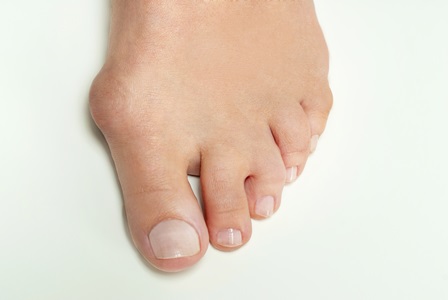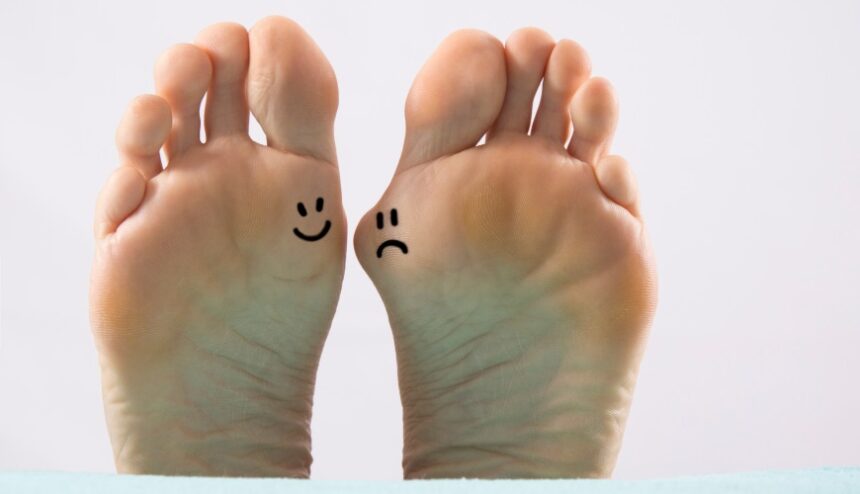 By Alissa Redding, DPM, Podiatry
By Alissa Redding, DPM, Podiatry
A bunion – also known as hallux valgus – is a complex, three-dimensional malalignment of the great toe joint (i.e., the big toe). Causes vary and include genetics, a short or long metatarsal bone, excessively flexible ligaments, some forms of arthritis, injury, and sometimes ill-fitting shoes. In hallux valgus deformity, the head of the metatarsal bone shifts outward, and the great toe deviates inward, creating the telltale bump on the side of the foot. Severity ranges from barely visible to crowding of the toes so that they overlap each other. Likewise, some bunions are quite painful, while others have no symptoms.
Hallux valgus is a common foot deformity, occurring more frequently in women than men. Bunions are seen at all ages but are more commonly seen in patients over 65 years old. They form slowly over several years; as the metatarsal head moves, symptoms arise, such as redness, pain, numbness, tingling, and stiffness of the big toe joint. Other signs and symptoms include blisters, ulcerations, and calluses. Evaluation includes looking at overall foot mechanics, presence or absence of symptoms, and overall patient health. The examination also includes X-rays taken in a standing position, as this best captures the deformity while the patient walks.
Treatment Options for Bunions
Bunions without pain, blistering, or ulceration typically do not need treatment. If there are symptoms, conservative or non-surgical treatments are offered first. These treatments do not eliminate the bump or deformity but make things more comfortable. Conservative treatments include wider shoes, orthotics (insoles), anti-inflammatory medications, padding, or joint injections – great options for those with minimal symptoms or who wish to avoid surgery.

Surgical treatment is reserved for patients who have insufficient relief with non-surgical methods. There are over 150 types of bunion procedures documented over the past century, such as correction of soft tissues, shaving of the bony bump itself, or osteotomy (bone cut) and shifting of the metatarsal or great toe. Options that offer more correction include fusing one or more joints of the foot.
Procedure selection is based on the severity of the bunion, overall patient health and functionality, and expectations and goals of treatment. Many procedures allow for walking in a special post-operative boot or shoe right after surgery, but some require a period of splinting or non-weight bearing. Nearly all bunion surgeries happen in an outpatient or same-day surgery setting.
Of course, any surgery has the potential for complications. Examples are infection, return of the deformity, numbness, delayed healing of tissues or bone, and later need for hardware removal. Because of gravity, the foot swells for several weeks to months after surgery. Ice, elevating the foot, and wearing a post-operative shoe or boot help alleviate this. Newer, minimally invasive techniques show potential for smaller incisions, less swelling, and faster recovery time. Because of the risk of complications and post-operative pain, surgical correction of bunions for cosmetic reasons is discouraged.
Bunion deformities are as varied and complex as the individuals that have them. While there is no “one size fits all” approach, a thorough evaluation and discussion of treatment options can reduce pain and improve the foot’s function for a better quality of life.
Discover Welcome Relief for Your Feet
Comprehensive foot and ankle care services are just steps away. Learn more about services and treatments for extensive foot and ankle care at Glacial Ridge Health System.
Dr. Redding’s medical interests include diabetic care, wound care, plantar fasciitis treatment, and all aspects of foot and ankle surgery—bringing much-needed foot, ankle, or heel pain relief. To schedule an appointment, call 320.634.5157.


